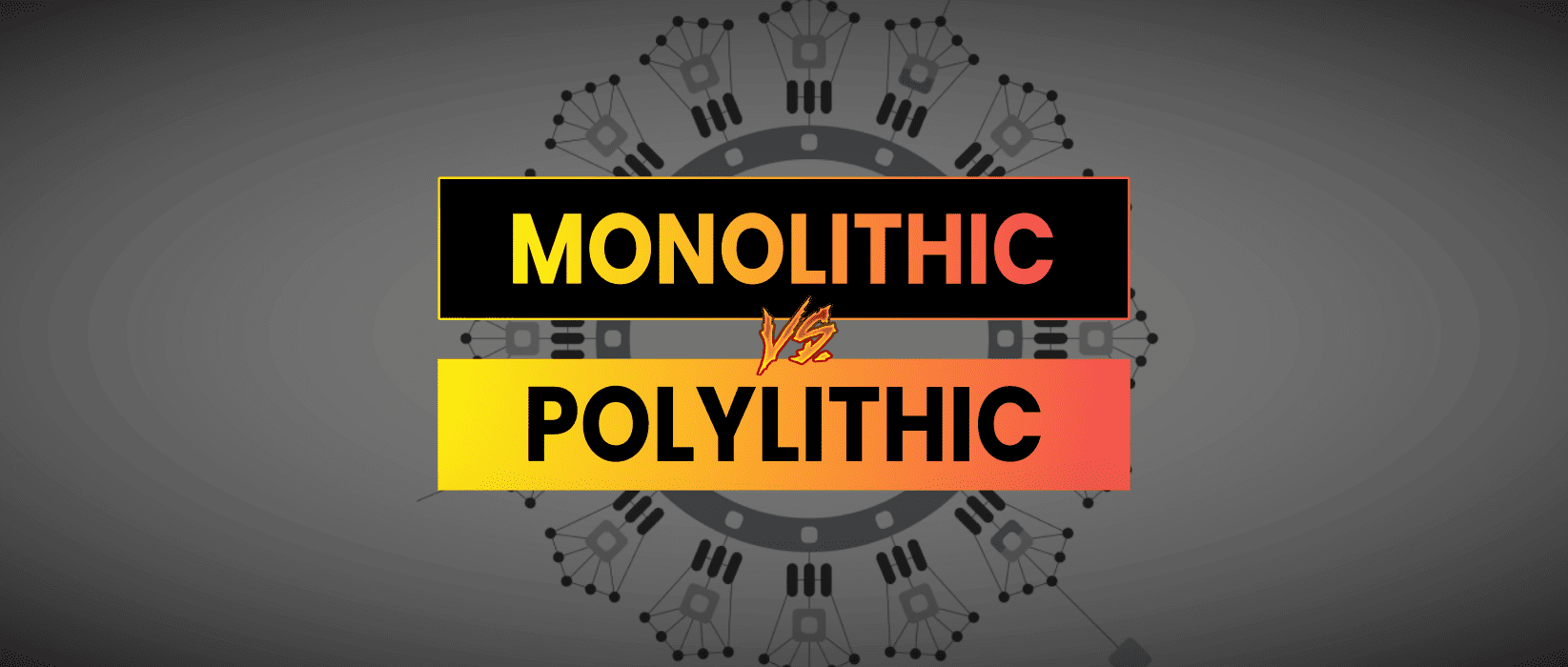Bitcoin is a monolithic blockchain, consensus is achieved on a single chain where all state data is stored. The Cosmos ecosystem is an example of a polylithic chain where there are multiple sub-chains running under a single consensus client.
Monolithic Blockchains
Monolithic blockchains are single-chain protocols where all functionalities including programmability through smart contracts, consensus protocol, security, and any related functionality are part of the same base blockchain. In simpler terms, every component of the blockchain is on-chain, and there is no off-chain component.
The benefit of using a monolithic blockchain is that it offers a high degree of security and immutability, as every component of the blockchain is on-chain. However, the downside of using a monolithic blockchain is that it can become slow and inefficient as the size of the blockchain grows. This is because every node on the network has to store the entire blockchain, which can result in slower transaction processing times and higher costs.
Polylithic Blockchains
Polylithic blockchains have multiple chains connected to a core chain and form a network of networks. Polylithic blockchains are categorized as Layer 1 blockchains because they are base layer protocols.
In a polylithic blockchain architecture, there can be multiple chains that are horizontal to the core chain. In some cases, the core chain is not strictly needed, and subnets can talk to each other directly.
Different chains can be used for different applications or purposes. For example, one chain could be used for storing data, while another chain could be used for processing transactions. This allows for greater flexibility and scalability than a monolithic blockchain.
Polylithic blockchains can also support multiple consensus mechanisms, which means that different chains can use different consensus mechanisms depending on their requirements.
In a polylithic blockchain, the core chain is used as the source of canonical truth. This means that all transactions on the network are validated by the core chain, which ensures that the network remains secure and immutable. The multiple chains that connect to the core chain are usually homogeneous or heterogeneous chains. If the chains connecting to the core chain are of the same type and built using the same rules, they are called homogeneous chains. If they are of different types and follow different rules, they are called heterogeneous chains. Usually, multichain architectures aim to be heterogeneous architectures.
Evolution of Blockchain Technology
As networks evolve many are moving towards Polylithic architectures because of the benefit it brings to scaling. An obvious example of this is Ethereum 2.0 which is fundamentally a monolithic chain but is developing towards scalability solutions through layer 2’s. Eventually Ethereum will become a chain of chains, used rarely for legacy transactions and this is more akin to a polyllithic architecture.
Bitcoin will remain a monolithic chain for the foreseeable future because of it’s focus on backwards compatibility and non-breaking changes when rolling out updates. It would be near impossible to scale Bitcoin to a polylithic architecture while still providing backwards compatibility for old clients.
Projects like Polkadot and Cosmos are creating ecosystems of appChains around a polylithic architecture. This “blockchain-on-demand” service allows developers to create private or public chains in the same way we spin up cloud servers on AWS. The competitive landscape for this service is constantly evolving alongside the needs of development teams.
One of the beautiful things about the blockchain sector is there isn’t a one size fits all solution which is perfect. Compromises are made in terms of scalability, security and decentralization (The Blockchain Trilemma) to meet the principles and design requirements of each individual system.


